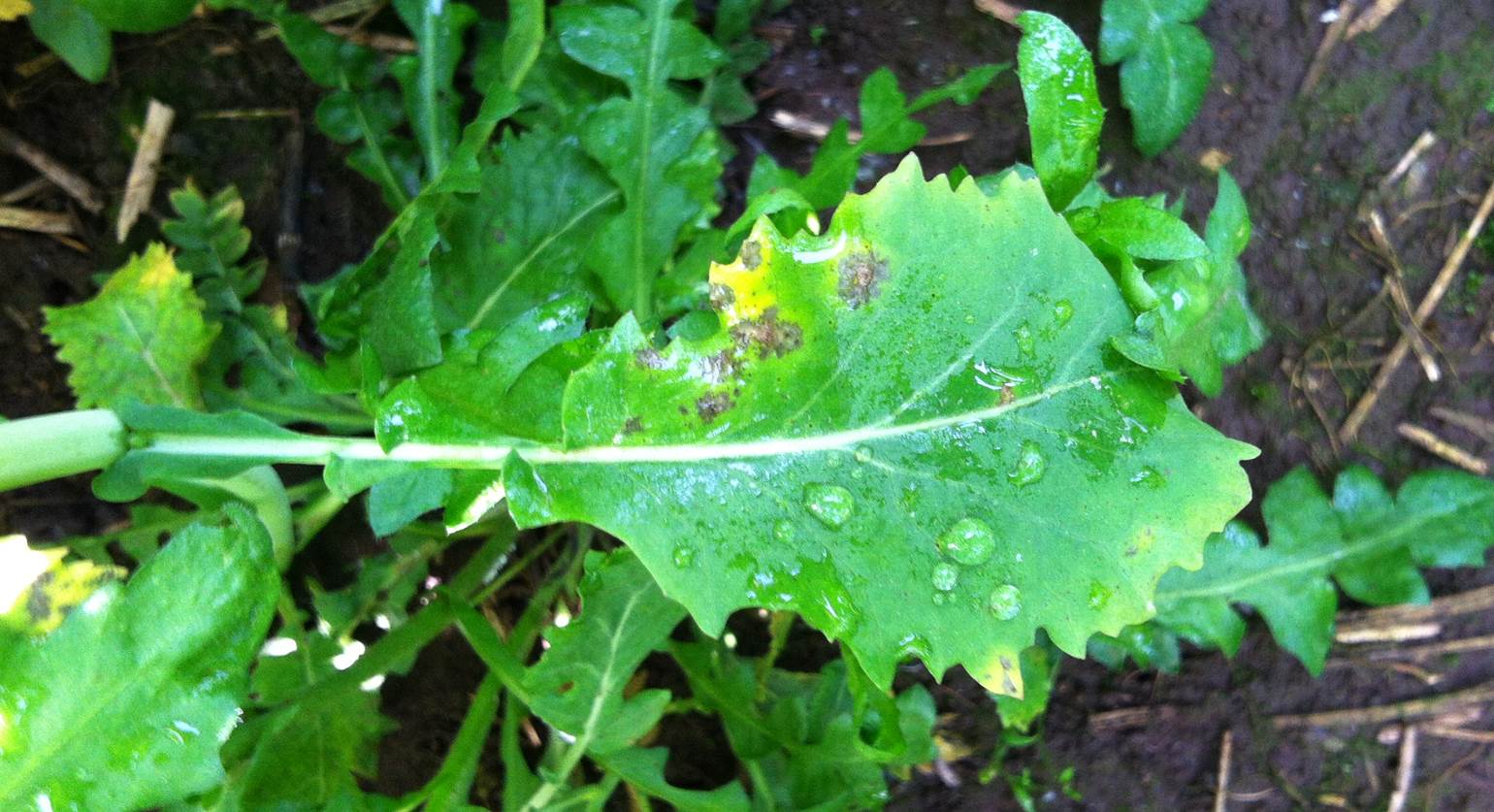
The autumn light leaf spot (LLS) forecast predicts a high risk of disease for the 2015–16 season for most of the UK.
Hosted by Rothamsted Research and supported by AHDB Cereals & Oilseeds, the regional LLS forecasts are based on disease incidence on pods in the previous season combined with summer temperature and rainfall information.
The current high forecasted risk of LLS developing in crops next spring was mainly driven by the high incidence of disease last season and the cool wet end to harvest.
Although disease incidence on pods, observed as part of the 2015 Defra-funded oilseed rape pest and disease survey, was lower than observed in 2014, it remains above the long-term average, with 77% of surveyed crops in England affected.
Regional risk
Historically, LLS was most serious in Scotland and the north of England but has increased in importance in recent years throughout England.
The regional risk forecasts are based on the proportion of crops predicted to have greater than 25% plants affected by LLS.
With the exception of East Anglia and the extreme south east of England (31% and 47%, respectively), risk is very high across all regions (ranging from 67% to 87%).
Other factors, such as varietal resistance and autumn fungicide applications, will affect the actual risk of LLS development.
Calculate your risk
As part of the LLS service, the Rothamsted Research website provides the opportunity to enter region, variety and sowing date information and generate risk forecasts for individual fields.
Dr Neal Evans, plant pathologist at Weather INnovations (WIN), who put together the forecast, said: “LLS levels in England have increased to the point that LLS is considered to be the top yield-sapping disease for oilseed rape.
“The identification of the disease can be tricky, as symptoms are not always visible and can easily be confused with other plant disorders.
“To assist with diagnosis, symptoms can be brought out by putting plant samples in polythene bags at 10–15°C for 4-5 days.”
Protecting your crop
Information on varietal resistance is provided through the disease ratings in the AHDB Recommended Lists for Cereals and Oilseeds.
Early detection and spraying before the disease becomes established are essential.
Following any autumn sprays, early 2016 is the next important period for LLS control.
Paul Gosling, AHDB Research Manager, said: “In January and February, growers will need to monitor crops closely and deal with any LLS symptoms promptly.
“The threshold of 25% of plants affected only applies at the early stem extension stage.
“If LLS is found before this, there is no threshold and early treatment is recommended to prevent the disease spreading within the crop.
“Our fungicide performance trials show several products can achieve similar levels of control.
“Product choice will be ultimately guided by other considerations, such as product activity against phoma leaf spot and plant growth regulatory activity.”
